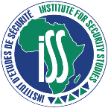Miscalculations in the 2013 National Crime Ratios
During the release of the official 2012/2013 crime statistics on Thursday, 19 September 2013, the National Minister of Police Nathi Mthethwa and the South African Police Service National Commissioner General Riah Phiyega presented percentage changes in the national crime statistics that were based on the ratios of crime incidents per 100 000 of the population.
These percentage changes are incorrect as the method used to compare crime ratios between 2011/12 and 2012/13 is based on a flawed method. However, this calculation flaw does not change the total numbers of cases recorded by the SAPS in each crime category nor the percentage differences between the total numbers of cases recorded for each year.
What is the problem?
The manner in which the SAPS used to calculate the percentage changes in the crime rates for 2012/13 and 2011/12 is flawed. The consequence is that the percentage change in the various crime categories is inaccurate (see reports here and here).
In October 2012, (a month after the release of the 2011/2012 crime figures) Statistics South Africa released census data that indicated that there was 1,7 million people more in the country than previously estimated. This meant that officially there were 52.3-million people living in South Africa compared with the previous estimate of 50.6-million. The 1,7 million additional people did not suddenly appear in 2012/13. The reason for the increase is that the population growth estimates previously used were developed from the 2001 census.
The 2011 census found that the population growth had been higher than estimated in 2001. As a result, the total population in South Africa would have to be revised for each previous year to give accurate annual population figures.
By comparing crime rates for 2011/12 and 2012/13 without updating the population estimated for 2011/12, the SAPS was not comparing "apples with apples."
In order to present accurate changes in the crime rates, the SAPS should have recalculated the crime rates for 2011/12 (as well as their five year and eight year comparisons) using the revised 2011 population figures. This would have yielded an accurate comparison between the 2012/13 crime rates and the 2012/11 crime rates.
Why is it a problem?
The problem is that this approach is statistically incorrect, because the changes in the crime rates are calculated on inaccurate population estimates.
Consequently, changes in the crime rates that were presented are inaccurate and therefore misleading. For example the change in the murder rate was given as a 0,6% increase. However, when using the correct population estimates for 2011/12 and 2012/13, the murder rate actually increased by 2,8%. This error does not change total numbers of 16 259 murders that were recorded in 2012/13.
While this slight change may not seem like much, it can lead to inaccurate conclusions. For example, the Minister of Police is under the impression that the rate of sexual offences had decreased by 0,4% in 2013/12 compared with 2011/12. However, using the correct population figures for 2011/13 the rate of sexual offences actually increased by 1,5%. Similarly, the figures provided by the SAPS to the Minister caused him to erroneously announce that non-residential (or business robberies) had decreased by 0,6%, when in fact it had increased by 1,3%.
Presenting crime statistics in this manner is an internationally acceptable standard, as it allows for an accurate measure of how crime rates that specifically impact on individuals (e.g. murder, assault), compare across different localities with different population sizes. It also allows for an accurate trend assessment due to the changes in the size of the national population each year. However, it is only correct when consistently accurate population estimates are used for each year.
What must be done?
We call on the Minister of Police to institute an independent inquiry led by Statistics South Africa to ascertain why this miscalculation occurred and to correct the figures presented. Steps must then be taken to ensure that this type of miscalculation does not occur again and these steps must be publicly announced. It is vital that this is done given that inaccurate calculations will negatively affect the credibility of both the official crime statistics and the South African Police Service.
Furthermore, we call on the Minister of Police to ensure that local crime statistics using the total numbers reported are released at each police station on the first day of every month. This will also minimize the chance that the crime statistics are manipulated at station level as communities will be able to pick up shortcomings where crimes are not being reported. Furthermore, it will also assist communities to quickly identify and respond to emerging crime threats in their areas.
For more analysis and information including detailed crime maps for all policing precincts in South Africa please visit the Crime and Justice Information and Analysis Hub at www.issafrica.org/crimehub
Statement issued by The Institute for Security Studies, September 20 2013
Click here to sign up to receive our free daily headline email newsletter

